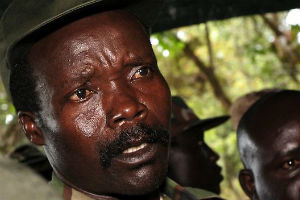While the regulatory conditions for philanthropy have shown improvements in six of the 11 regions around the world since 2015, the overall philanthropic environment in about 40 percent of countries and economies evaluated remains restrictive. Political environments present significant challenges to philanthropic activity.
The Middle East and Northern Africa ranked lowest on political environment among the 11 regions studied, followed by Sub-Saharan Africa and Latin America. More positively, economies with favorable philanthropic environments are linked with higher economic indicators such as per capita Gross Domestic Product (GDP).
Those are among the findings of a new study, the 2018 Global Philanthropy Environment Index (GPEI), from the Indiana University Lilly Family School of Philanthropy at IUPUI in Indianapolis, Ind.
“With billions of dollars in philanthropic aid and other resources at stake — we need to understand the factors that enable philanthropy to thrive and those that restrict it,” said Una Osili, Ph.D., Professor of Economics and Associate Dean for Research and International Programs at the IU Lilly Family School of Philanthropy.
The GPEI includes evaluations of 79 economies on a five-point scale (1.0 to 5.0) across five key factors that measure the ease with which philanthropic organizations can operate, both within countries and across borders. The report is designed to facilitate collaborations across government, business and philanthropic sectors and help inform decisions about what can be done to strengthen the environment for philanthropy.
- The five factors measured in the GPEI include:
- regulations about the formation and operation of philanthropic organizations
- laws governing the giving and receiving of donations domestically
- laws governing donations made across borders
- the political and governance environment
- the socio-cultural environment.
This is the first year that the report has included a review of the political and socio-cultural environments in the analysis.
- Eight of the report’s key findings include:
- While three-fifths of economies studied have a generally favorable philanthropic environment, about two out of five economies have a generally restrictive environment. The GPEI global average score is 3.64, on a scale from 1 to 5.
- The political environment is a critical challenge facing the philanthropic sector. The political environment, even more than the regulatory environment, can undermine the work of philanthropic organizations, especially in the Middle East and Northern Africa (2.63), Sub-Saharan Africa (2.75), and Latin America (2.88), where political uncertainty is particularly acute and scores fall below the global average (3.41).
- Regions with favorable environments are linked with higher per capita GDP. Economies known for enabling philanthropic activities tend to see correspondingly strong levels of per capita GDP and economic development. The United States and Canada (overall index score of 4.58), Northern and Western Europe (4.53) and Oceania (4.25) had the highest regional average score, all with high levels of GDP.
- Migration and natural disasters had a major influence on the philanthropic landscape between 2015 and 2018. International migration crises, such as the Syrian refugee crisis, and natural disasters, such as the Nepal and Mexico earthquakes, El Niño, as well as Hurricanes Matthew, Harvey, Irma, and Maria, together substantially increased the number of people needing humanitarian assistance and the number of collaborative initiatives undertaken to address these needs, with donors contributing record levels of funding.
- The effects of new regulatory changes have been mixed. The comparison of the 57 economies included in both the 2015 and 2018 reports on the three factors measuring regulatory environment show improvement in six of the 11 regions, with a modest increase of 1.7 percent on the global average score. Yet, nearly one-quarter of the 79 economies studied in the 2018 report introduced restrictive regulatory changes after January 2014.
- Cross-border flows of donations are becoming more restricted. Legislation targeting illicit financial flows and laws penalizing foreign donations appear to be a growing trend. Since early 2010, several economies have introduced regulations to increase the scrutiny of organizations that accept foreign charitable contributions. In the last three years, China, Egypt, Hungary, India and Israel, among others, have created new laws, or have amended existing laws, to regulate the inflow of foreign funds received by philanthropic organizations.
- Giving is an important aspect of all cultures. The socio-cultural environment refers to the space that a society creates and maintains to engage in philanthropic action through various channels. This was the factor was scored the highest, on average, among all 79 countries studied, demonstrating that the act of giving is embedded in all societies in unique ways, even if the formal philanthropic sector is not always trusted by the public.
- Partnerships between philanthropic organizations, governments, and businesses are expanding worldwide—aided by technology. Collaborations can allow organizations to address complex and growing social problems efficiently and effectively. For example, web-based crowdfunding also continues to grow and is becoming widely used in nearly all regions studied.
“We know that the public and private sectors need the help of philanthropy to solve the world’s problems,” said Amir Pasic, Ph.D., the Eugene R. Tempel Dean of the IU Lilly Family School of Philanthropy. “But our ability to maximize the impact of philanthropy in response to immediate crises and long-term challenges requires that we understand how laws, policies and cultural attitudes shape success or failure. With famine and refugees in need of immediate relief, and grave risks to peace and sustainability looming on the horizon, the stakes could not be higher.”
For more than 10 years, the Hudson Institute provided in-depth research on philanthropy around the world with its Index of Global Philanthropy and Remittances, as well as research on the incentives and barriers to global giving through its Index of Philanthropic Freedom, beginning in 2013. In 2017, these indices were formally transferred to the Indiana University Lilly Family School of Philanthropy, which will continue to publish them under the new titles the Global Philanthropy Resource Flows Index and the Global Philanthropy Environment Index.











